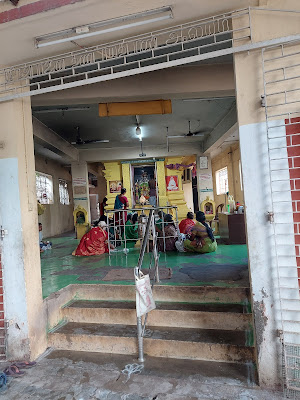Ekambaranathar Temple, Kanchipuram, India
Located around 75 km from Chennai, Kanchipuram is considered one of the seven holy cities for Hindus. Known as the city of thousand temples, the town has about one hundred prominent and ancient temples. Among all temples of Shiva in Kanchi, Ekambaranathar Temple is the biggest and most popular. In fact, the temple is one of the most prominent temples of the entire state of Tamil Nadu. This article focuses on that shrine located at the heart of the town.
- One of the most popular temples of Tamil Nadu state
- The most famous Shiva temple of Kanchipuram town
- This is the first Devaram Paadal Petra Sthalam in the Tondai region
- A rare temple that has both Paadal Petra Sthalam and Divya Desam
- God - Ekambaranathar or Ekambareshwarar
- Goddess - Kamakshi or Elavar Kuzhali
- Other names of God - Tiruvegambar, Thaluvak Kuzhainda Nathar
- Sthala Vruksha (holy tree) - Mango
- Teertha of Divya Desam - Kamba River, Shiva Ganga, Sarva Teertha
- Appar, Sambandhar and Sundarar have sung about this temple in their verses
- It is one of the Pancha Bhoota Sthalams. It represents Earth.
- Divya Desam Deity - Nila Thingal Thundathan or Chandra Chooda Perumal
- Divya Desam Goddess - Nila Thinga Thunda Thayaar
- Divya Desam Teerth - Chandra Pushkarani
- Divya Desam Vimana - Purushasookta Vimana
- It is the 49th Divya Desam in the Toondai region
- Tirumangai Alwar has sung hymn about this Divya Desam
Temple Layout
Ayirankal Mandapa
Shiva Lingas
Towers
Entrance of Main Temple
On the way to the outer prakara from the entrance, a part of the mango tree, which is believed to be the original tree of 3500 years old, is found.
A lot of pillared mandapas are located within this prakara area.
Some sub-shrines/sculptures that are found in this prakara:
- A panel depicting the marriage scene of Shiva and Parvati with the presences of Vishnu and Brahma
- Eight-armed Pralayakala Amman
- Kalarchinga Nayanar
- Shiva Linga and Nandi
- Eight Shiva Lingas and one smaller Shiva Linga
- Twelve smaller Shiva Lingas
- Another big Shiva Linga separately
- 108 Shiva Lingas in different sizes
- Ganesha with five heads and ten arms seated on a lion
- Ganesha
- Utsava (festival) deities of Ekambareswar and Kamakshi in Gayatri Mandapa with Rudraksha ceiling
- Called as Mavadu Skanda - Shanmukha-Valli-Devasena
- Ezhavaar Kuzhali utsava deity
- Big Sahasra Linga - worshiped by Rama
- Natraja-Shivakami - very big sub-shrine
- Pralayakala Amman Utsava deity
- Bhairava
- Arumuga Nainar with his consorts - Utsava deities
- Navagraha
The entrance of the area that comprises the inner prakara and the sanctum, has two big Dwarapalas.
The following idols are found in the inner prakara:
- 63 Nayanmars
- Bhikshatana
- Sowbhagya Ganapati
- Shakti Ganapati with his consorts
- Kasi Vishwanatha Linga
- Markandeyeswarar Linga
- Kalla Kambar Shiv Linga (worshiped by Vishnu)
- Utsava images of 63 Nayanmars
- Sundara Vinayaka
- 108 Shiva Lingas without Aavudai bases
- Arumugam with his consorts
- Mattala Madhesvara Linga
- Nalla Kambar Shiv Linga (worshiped by Rudra)
The east-facing sanctum enshrines the big and tall Shiva Linga named Ekambareswara or Ekambaranathar. Behind Shiva Linga, the Somaskanda panel featuring Shiva, Parvati and Skanda is found on the wall.
The entrance of the sanctum has the icons of Dwarapalas. (Totally, three pairs of Dwarapalas are found in this temple.)
Holy Mango Tree
Divya Desam
In the inner prakara, there is a west-facing shrine enshrining two icons of Vishnu. One is the old one, and the other one is comparatively new. Vishnu is found in the standing posture in this shrine. This is one of the Divya Desams, and the deity is called Nila Thinga Thundathan or Chandra Chooda Perumal.
Ideally, his consort, vimana, and teertha should be present as per the scripts; but only the presiding deity is found currently.
Happy travelling.


Visit my site, krishnakumartk.com, to know more about the travel guides and other books that I have written.









.JPG)

Comments
Post a Comment